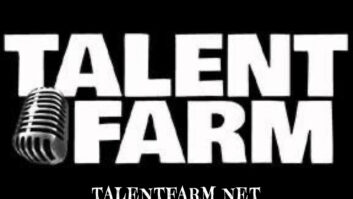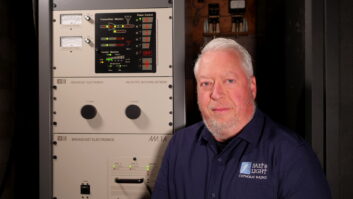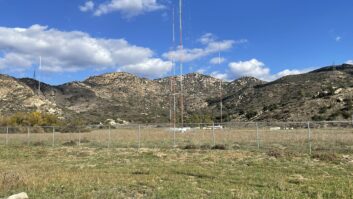… doesn’t mean he knows the law!
A contract engineer recently told me of an FCC inspection that began at 5 p.m. After reviewing EAS and the public file, the inspector waited for the AM to switch to the night directional array. After seeing the switch, he informed the engineer that he wanted to do the night-pattern monitor points – in the dark!
With the FCC requesting proof data to be taken two hours after sunrise and two hours before sunset, the inspector was clearly wrong. The contract engineer went around and around with the inspector. The station didn’t get cited, but it’s a good example of the need to speak up – politely – when something doesn’t seem right.
I’m reminded of an older station owner who had his own way of standing up to the FCC. He was being inspected because the lights on his center tower were out. He filed the paperwork to have the center tower lighting extinguished, to save operating cost. An inspector was dispatched to determine why the lights weren’t on, and why the owner hadn’t notified the FAA. After much rummaging, the elderly station owner produced a copy of the original paperwork and the exemption.
On his way out, the inspector decided to drop by the transmitter site. Located in a flood plain, one of the tower stockade fences had been torn down by high water. The inspector asked the owner about fixing the fence, and the owner said he would, after the flood season.
Not the answer the inspector wanted to hear, but he tried another tack. “What would happen if a small child got inside the tower fence, and was electrocuted when he touched the tower?”
The sage station owner replied, just as serious and without batting an eye, “Well, I guess he’d never do it again, would he?”
There’s a right and a wrong way to confront the FCC. Most inspectors are decent folks, just doing their job. If something doesn’t seem right, let them know. A compromise can be achieved. Above all, don’t lie. No station is worth defending with a falsehood. And no lie to the commission is worth your reputation.
Like lawyers, when inspector ask a question, they usually know the correct answer. Truer words were never stated than when Sir Walter Scott said, “Oh what a tangled web we weave, when first we practice to deceive.”
I saw a station operations manager lose his job when he insisted he turned down the transmitter power each night. The inspector kept asking if he was sure, did he check the remote control after the change, did he log each channel’s nighttime parameters? Yes, yes, yes.
The inspector gave the guy every chance to admit what had not been done. But after the third lie, the inspector produced his log. He’d sat near the transmitter for three nights with a field meter, and the rig was never reduced in power. It was a willful and repeated violation in the eyes of the inspector. The station was fined, and the OM was sent packing.
A lot of air staff pooh-pooh FCC rules nowadays. With no real operator licensing requirements, no one cares, right? Wrong!
With a station license hanging in the balance, get your GM behind you in certifying all of your operators with the SBE. The entry-level “operator” certifications not only are proof of your operator’s abilities but can help the station prove that as the licensee, they are taking steps to make sure that all operators are trained properly.
(click thumbnail)Fig. 1: Seal doorframes with expanding foam to keep nature out.

. . .
Not only is it wise to plug cable access holes to the outside, but in Fig. 1, we see the doorframe sealed as well. The tubes of expanding foam sealant make the job quick and easy. Dirt, dust and pollen also are kept out. This means cleaner equipment and more reliable operation.
(click thumbnail)Fig. 2: Unappreciated but ever-present, safety lights are a good investment for a site without a generator.
It’s not a bad idea to spray the outside doorframe and threshold with bug spray. The application won’t last forever, but it deters insects from nesting or attempting entry under the door. Ditto for mothballs. Place a few of them in the bottom of equipment racks and especially in your AM coupling networks to deter snakes and rodents.

. . .
Fig. 2 shows the installation of a safety light. These are available readily at hardware superstores and are priced reasonably.
Although the battery powering the lights has a finite life, for facilities with no generator these safety lights beat walking into a dark transmitter building.
. . .
Dwight Morgan handles engineering for Maranatha Broadcasting in Grand Junction, Colo. He writes that about 15 years ago, he had a couple of FMs that used the fused disconnect panels. He discovered that when he “thought” he had disconnected the power, in fact, the bakelite had failed to pull the knives out. Two of the three phases were still connected!
(click thumbnail)Fig. 3: Here’s the key for our puzzle last issue. How’d you do?
When doing transmitter maintenance, open those fused disconnect boxes, make sure the disconnect has taken place!
Dwight also experienced problems with breakers, as we discussed in the Sept. 11 Workbench. Some started to smoke as they heated up inside. Another just outright failed, and an intermittent third had Dwight running in circles. Sometimes when you threw the breaker back on, it would work, sometimes it wouldn’t.
Dwight encourages safety first, working safely with all the power removed and the meter checked before wandering inside the breaker box with a screwdriver or Allen wrench. Be sure to check the connections at least once a year. With circuits like air conditioners cycling on and off, the current surges and heat of the connections inside the box may cause lugs to loosen. This increases the heat and can lead to a failure or fire.

. . .
Fig. 3 is the key for “Where Are They Today” that appeared in the last issue of Workbench. Did you find them all?
Submissions for this column are encouraged, and qualify for SBE recertification credit. Fax your submission to (703) 323-8044, or send e-mail to [email protected].












